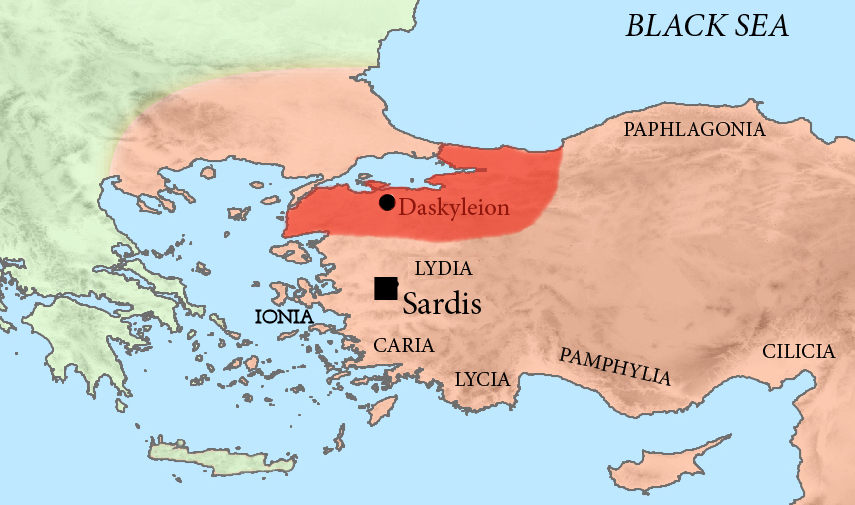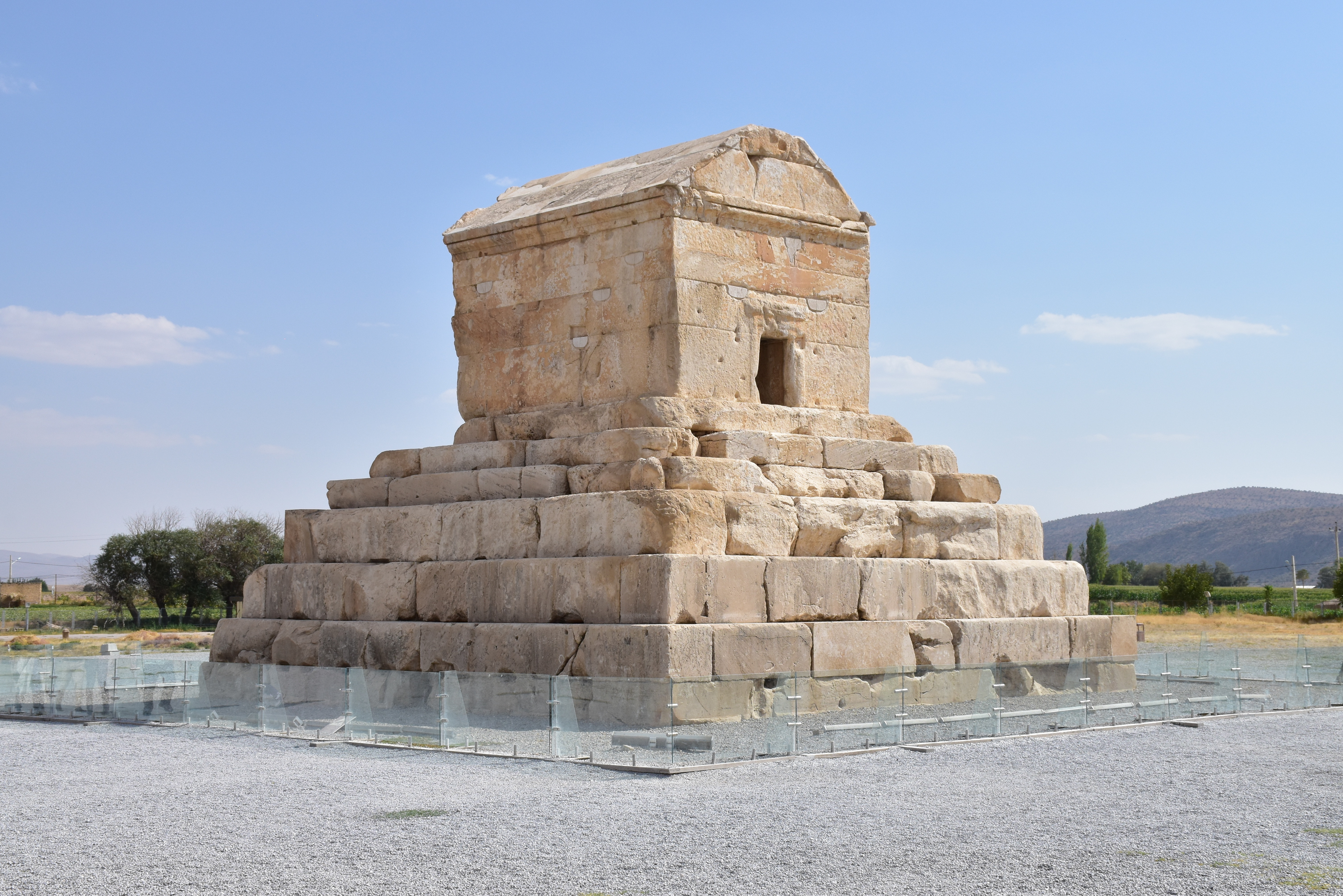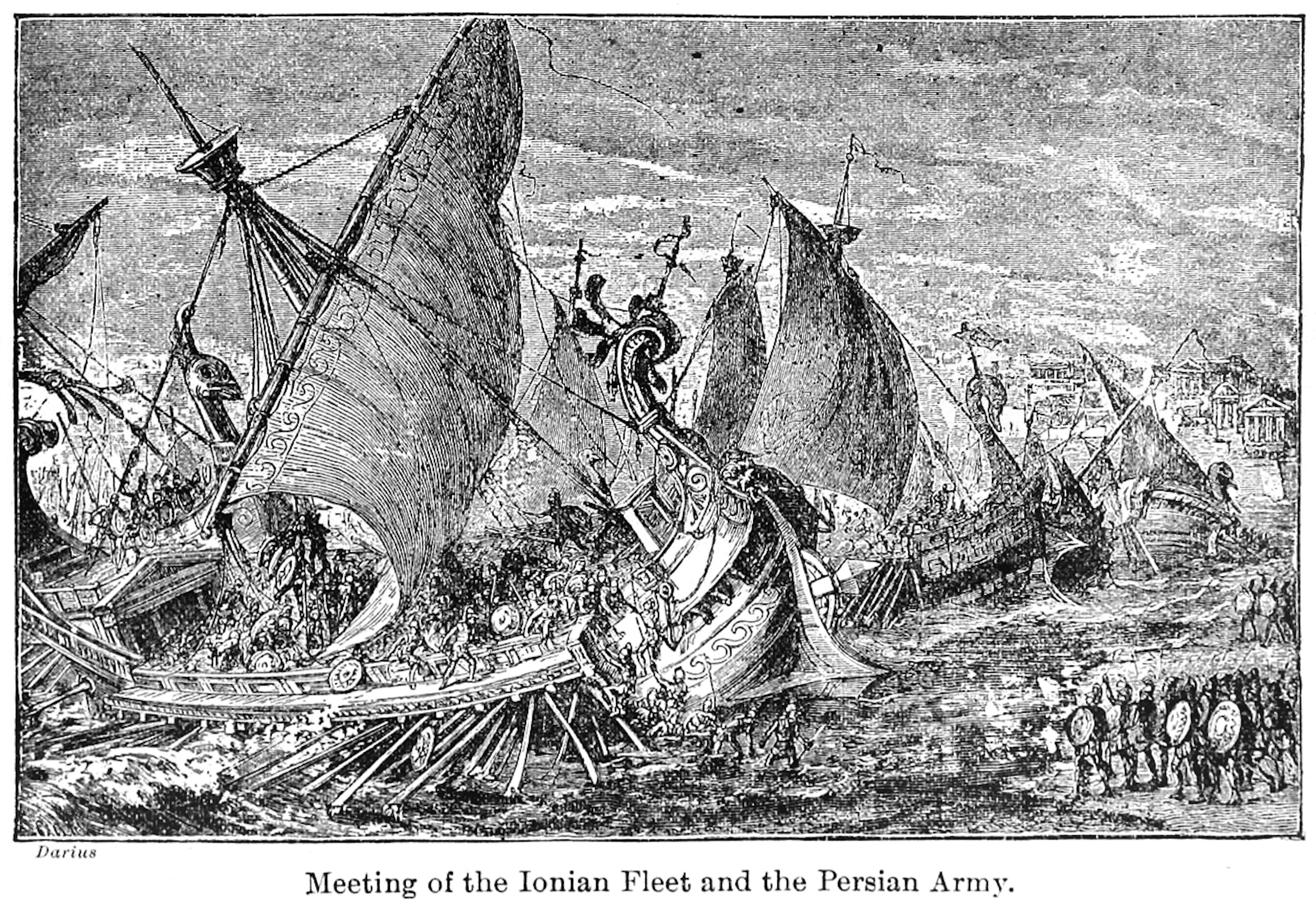|
Megabazus
Megabazus (Old Persian: ''Bagavazdā'' or ''Bagabāzu'', ), son of Megabates, was a highly regarded Persian general under Darius, to whom he was a first-degree cousin. Most of the information about Megabazus comes from '' The Histories'' by Herodotus. Scythian campaign (513 BC) Megabazus led the army of the Persian King Darius I in 513 BC during his European Scythian campaign. After this had to be discontinued without result, Megabazos was left as commander-in-chief of an 80,000-man army in Europe, with the mission of subjugating the Greek cities on the Hellespont. The Persian troops first subjugated gold-rich Thrace after capturing Perinthos and the coastal Greek cities, and then defeated the powerful Paeonians, many of whom he deported to Phrygia. Subjugation of Macedon Finally, Megabazus sent envoys to Amyntas I, king of Macedon, demanding acceptance of Persian domination, which the king accepted. Megabazus received the present of " Earth and Water" from Amyntas, whi ... [...More Info...] [...Related Items...] OR: [Wikipedia] [Google] [Baidu] |
Amyntas I
Amyntas I () was king of the ancient Greek kingdom of Macedonia from at least 512/511 until his death in 498/497 BC. Although there were a number of rulers before him, Amyntas is the first king of Macedonia for which we have any reliable historical information. During Amyntas' reign, Macedonia became a vassal state of the Achaemenid Empire in 510 BC. Background Amyntas was a member of the Argead dynasty and the son of King Alcetas. According to Herodotus, Amyntas was the sixth king of Macedonia. He had two children with an unnamed spouse: Alexander I and Gygaea. Reign Relationship with the Persian Empire In 513 BC, Persian forces led by Darius I crossed the Bosporus in a successful expedition against the Scythians, securing a frontier on the Danube in the process. Darius then returned to Sardis in Asia Minor and ordered his cousin Megabazus to conquer the rest of Thrace. Megabazus marched westward into the Strymon Basin in 512 or 511 BC, subjugating a number of tr ... [...More Info...] [...Related Items...] OR: [Wikipedia] [Google] [Baidu] |
Bubares
Bubares (, died after 480 BC) was a Persian nobleman and engineer in the service of the Achaemenid Empire of the 5th century BC. He was one of the sons of Megabazus, and a second-degree cousin of Xerxes I. Marriage to the sister of Alexander I of Macedon Bubares was sent to Macedonia in order to settle a diplomatic conflict with King Alexander I. Alexander had been held responsible (as crown prince) for the murder of several members of a Persian delegation a few years earlier. The Persians had taken liberties with the Macedonian women of the Palace, and therefore had all been killed with their assistants by the king Alexander and his men. General Bubares was sent with a contingent of troops to investigate the matter. Alexander resolved the situation by surrendering a large sum of money and marrying his sister Gygaia to Bubares: The couple had a son Amyntas named after their maternal grandfather. Amyntas was later officiated in Caria as a tyrant of the city of Alabanda. Aft ... [...More Info...] [...Related Items...] OR: [Wikipedia] [Google] [Baidu] |
Achaemenid Empire
The Achaemenid Empire or Achaemenian Empire, also known as the Persian Empire or First Persian Empire (; , , ), was an Iranian peoples, Iranian empire founded by Cyrus the Great of the Achaemenid dynasty in 550 BC. Based in modern-day Iran, it was the List of largest empires#Timeline of largest empires to date, largest empire by that point in history, spanning a total of . The empire spanned from the Balkans and ancient Egypt, Egypt in the west, most of West Asia, the majority of Central Asia to the northeast, and the Indus Basin, Indus Valley of South Asia to the southeast. Around the 7th century BC, the region of Persis in the southwestern portion of the Iranian plateau was settled by the Persians. From Persis, Cyrus rose and defeated the Medes, Median Empire as well as Lydia and the Neo-Babylonian Empire, marking the establishment of a new imperial polity under the Achaemenid dynasty. In the modern era, the Achaemenid Empire has been recognised for its imposition of a succ ... [...More Info...] [...Related Items...] OR: [Wikipedia] [Google] [Baidu] |
Hellespontine Phrygia
Hellespontine Phrygia () or Lesser Phrygia () was a Persian satrapy (province) in northwestern Anatolia, directly southeast of the Hellespont. Its capital was Dascylium, and for most of its existence it was ruled by the hereditary Persian Pharnacid dynasty. Together with Greater Phrygia, it made up the administrative provinces of the wider Phrygia region. History The satrapy was created in the beginning of the fifth century BC, during the time of administrative reorganisations of the territories in western Asia Minor, which were amongst the most important Achaemenid territories. The first Achaemenid ruler of Hellespontine Phrygia was Mitrobates (ca. 525–522 BC), who was appointed by Cyrus the Great and continued under Cambises. He was killed and his territory absorbed by the satrap of neighbouring Lydia, Oroetes. Following the reorganization of Darius I, Mitrobates was succeeded by Oebares II (c.493), son of Megabazus. Artabazus then became satrap circa 479 BC and star ... [...More Info...] [...Related Items...] OR: [Wikipedia] [Google] [Baidu] |
Megabates (son Of Megabazus)
Megabates (Old Persian: ; Ancient Greek: ; dates unknown) was a Persian military leader in the late 6th and early 5th centuries BC. According to Herodotus he was a cousin of Darius the Great and his brother Artaphernes, satrap of Lydia. Based on the writings of Herodotus, Megabates is most notable for his joint participation in the failed 499 BC siege of Naxos. With Aristagoras and 200 ships, he was sent by Darius the Great to annex the small Aegean island to the Persian Empire.Herodotus. (2003). '' The Histories''. Trans. Aubrey De Selincourt. Rev. John Marincola. London: Penguin Group. Herodotus is of the view that this venture failed after a siege of four months because of the mutual dislike between Aristagoras and Megabates. As a result, Herodotus states that it was Megabates who forewarned the Naxians of the ensuing Persian siege, as he and Aristagoras argued after Megabates punished a captain for not setting up a watch. As a result, the people of Naxos gathered supplies ... [...More Info...] [...Related Items...] OR: [Wikipedia] [Google] [Baidu] |
Oebares II
Oebares II (Old Persian: ''Vaubara'') was, according to Herodotus (Herodotus 6.33) a son of Megabazus, himself a first degree cousin of Darius I. Oebares became satrap of Daskyleion (Hellespontine Phrygia) in 493 BC, after his father. Herodotus mentions Oebares, when writing about the retaliatory actions of the Achaemenid fleet following the Ionian revolt: Megabates was a brother of Oebares. He was a commander of the Achaemenid fleet that sailed against Naxos in 500/499 BC. He also was Satrap of Daskyleion in the early 470s.Thucydides, 1.129; Herodotus, 5.32-35, 6.32 In 479 BC, Artabazos was named the new satrap of Hellespontine Phrygia. He was the first official satrap of the Pharnacid dynasty, named after his illustrious father Pharnaces. This office was passed down to his descendants, down to the conquests of Alexander the Great Alexander III of Macedon (; 20/21 July 356 BC – 10/11 June 323 BC), most commonly known as Alexander the Great, was a king of the A ... [...More Info...] [...Related Items...] OR: [Wikipedia] [Google] [Baidu] |
Pherendates
Pherendates (; ) was an Achaemenid satrap of ancient Egypt in the early 5th century BCE, at the time of the Achaemenid 27th Dynasty of Egypt. Career A son of Megabazus, and an army commander under king Darius I, Pherendates is mainly attested from three letters written in Egyptian Demotic. He replaced the satrap Aryandes who was deposed by Darius around 496 BCE; although the exact accession date of Pherendates is unknown. Pherendates was definitely the satrap in 492 BCE. at the ''''. In the aforementioned letters, certain priests of the local temple of Khnum at |
Megabates
Megabates (Old Persian: ; Ancient Greek: ; dates unknown) was a Persian military leader in the late 6th and early 5th centuries BC. According to Herodotus he was a cousin of Darius the Great and his brother Artaphernes, satrap of Lydia. Based on the writings of Herodotus, Megabates is most notable for his joint participation in the failed 499 BC siege of Naxos. With Aristagoras and 200 ships, he was sent by Darius the Great to annex the small Aegean island to the Persian Empire.Herodotus. (2003). '' The Histories''. Trans. Aubrey De Selincourt. Rev. John Marincola. London: Penguin Group. Herodotus is of the view that this venture failed after a siege of four months because of the mutual dislike between Aristagoras and Megabates. As a result, Herodotus states that it was Megabates who forewarned the Naxians of the ensuing Persian siege, as he and Aristagoras argued after Megabates punished a captain for not setting up a watch. As a result, the people of Naxos gathered supplies ... [...More Info...] [...Related Items...] OR: [Wikipedia] [Google] [Baidu] |
Hellespontine Phrygia
Hellespontine Phrygia () or Lesser Phrygia () was a Persian satrapy (province) in northwestern Anatolia, directly southeast of the Hellespont. Its capital was Dascylium, and for most of its existence it was ruled by the hereditary Persian Pharnacid dynasty. Together with Greater Phrygia, it made up the administrative provinces of the wider Phrygia region. History The satrapy was created in the beginning of the fifth century BC, during the time of administrative reorganisations of the territories in western Asia Minor, which were amongst the most important Achaemenid territories. The first Achaemenid ruler of Hellespontine Phrygia was Mitrobates (ca. 525–522 BC), who was appointed by Cyrus the Great and continued under Cambises. He was killed and his territory absorbed by the satrap of neighbouring Lydia, Oroetes. Following the reorganization of Darius I, Mitrobates was succeeded by Oebares II (c.493), son of Megabazus. Artabazus then became satrap circa 479 BC and star ... [...More Info...] [...Related Items...] OR: [Wikipedia] [Google] [Baidu] |
Achaemenid Army
The Achaemenid Empire or Achaemenian Empire, also known as the Persian Empire or First Persian Empire (; , , ), was an Iranian peoples, Iranian empire founded by Cyrus the Great of the Achaemenid dynasty in 550 BC. Based in modern-day Iran, it was the List of largest empires#Timeline of largest empires to date, largest empire by that point in history, spanning a total of . The empire spanned from the Balkans and ancient Egypt, Egypt in the west, most of West Asia, the majority of Central Asia to the northeast, and the Indus Basin, Indus Valley of South Asia to the southeast. Around the 7th century BC, the region of Persis in the southwestern portion of the Iranian plateau was settled by the Persians. From Persis, Cyrus rose and defeated the Medes, Median Empire as well as Lydia and the Neo-Babylonian Empire, marking the establishment of a new imperial polity under the Achaemenid dynasty. In the modern era, the Achaemenid Empire has been recognised for its imposition of a succ ... [...More Info...] [...Related Items...] OR: [Wikipedia] [Google] [Baidu] |
European Scythian Campaign Of Darius I
The Scythian campaign of Darius I was a military expedition into parts of European Scythia by Darius I, the king of the Achaemenid Empire, in 513 BC. The Scythians were an East Iranian-speaking people who had invaded Media, revolted against Darius and threatened to disrupt trade between Central Asia and the shores of the Black Sea as they lived between the Danube and Don Rivers and the Black Sea. The campaigns took place in parts of what is now the Balkans, Ukraine, and southern Russia. The Scythians managed to avoid a direct confrontation with the Persian army due to their mobile lifestyle and lack of any settlement (except Gelonus), while the Persians suffered losses due to the Scythians' scorched earth tactic. However, the Persians conquered much of their cultivated lands and damaged their allies, forcing the Scythians to respect the Persian force. Darius halted the advance to consolidate his gains, and built a defence line. Practically everything that is known of this ca ... [...More Info...] [...Related Items...] OR: [Wikipedia] [Google] [Baidu] |
Macedonia (ancient Kingdom)
Macedonia ( ; , ), also called Macedon ( ), was an Classical antiquity, ancient monarchy, kingdom on the periphery of Archaic Greece, Archaic and Classical Greece, which later became the dominant state of Hellenistic Greece. The History of Macedonia (ancient kingdom), kingdom was founded and initially ruled by the royal Argead dynasty, which was followed by the Antipatrid dynasty, Antipatrid and Antigonid dynasty, Antigonid dynasties. Home to the ancient Macedonians, the earliest kingdom was centered on the northeastern part of the Greek peninsula,. and bordered by Epirus (ancient state), Epirus to the southwest, Illyria to the northwest, Paeonia (kingdom), Paeonia to the north, Thrace to the east and Ancient Thessaly, Thessaly to the south. Before the 4th century BC, Macedonia was a small kingdom outside of the area dominated by the great city-states of Classical Athens, Athens, Sparta and Classical Thebes, Thebes, and Achaemenid Macedonia, briefly subordinate to Achaemeni ... [...More Info...] [...Related Items...] OR: [Wikipedia] [Google] [Baidu] |






